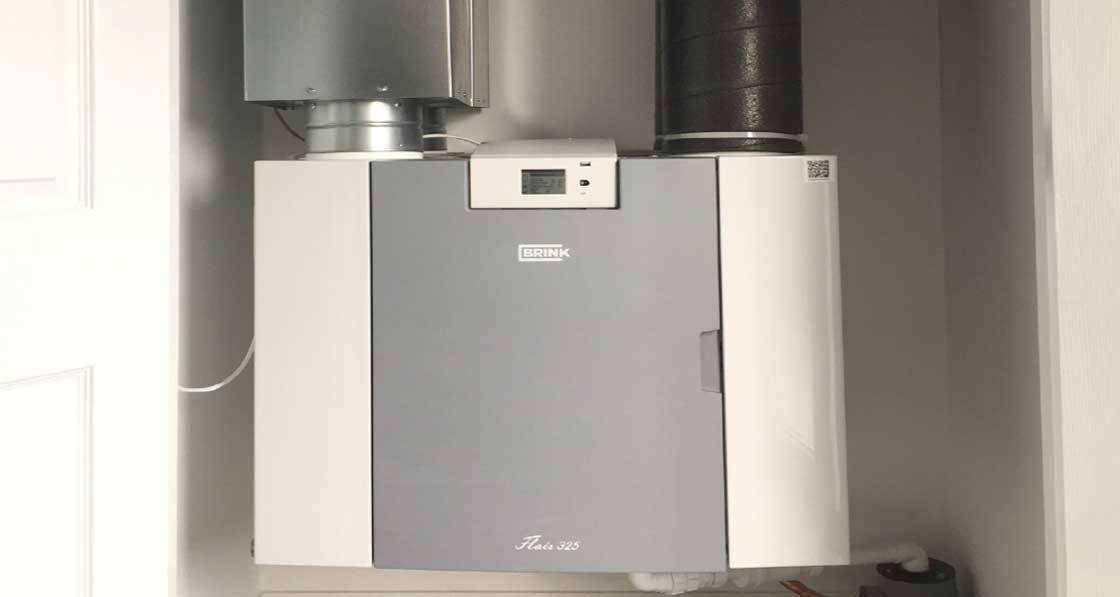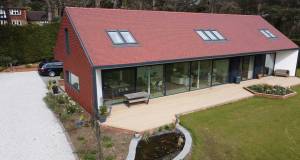
- Marketplace
- Posted
Size is key for MVHR — CVC Direct
When it comes to MVHR, size does matter, according to leading system designer and supplier CVC Direct.
This article was originally published in issue 34 of Passive House Plus magazine. Want immediate access to all back issues and exclusive extra content? Click here to subscribe for as little as €10, or click here to receive the next issue free of charge
“All too often MVHR [mechanical ventilation with heat recovery] units are under specified and forced to run at high capacity, and the outcome of this is a noisy and inefficient system,” CVC Direct’s Nicholas Vaisey told Passive House Plus.
“Typically we aim for 50-60% of the unit’s maximum capacity for normal ventilation, allowing for sufficient boost ventilation.”
CVC supplies Brink MVHR units with constant volume fans, which operate by constantly assessing the system pressure and adjusting the fan to maintain the commissioned airflow. “On this basis it is very important to maintain low system pressures, to help reduce noise and provide an efficient system,” he said. “So, it is just as important to size the ducting correctly and use the correct ducting,” he continued. “Trying to push too much air down a small duct means high velocities, increased pressure on the system and increased noise.
Unnecessary bends, sharp bends and corrugated ducting also result in higher levels of resistance in the MVHR system, which increases the noise from the unit and turbulent noise generated by the airflow.
“At CVC we design the air velocities to be below two metres per second at normal operation, to maintain these velocities we recommend the 92 mm semi-rigid ducting, rather than the commonly used 75 mm. If we supply a rigid system, we would use steel rather than a PVC system, for its increased performance characteristics.”
Lack of attenuators is another common failure with specifications, Vasiey said. Passive house guidelines outline sound pressure levels of less than 25 dB(A) in living and sleeping rooms, and less than 30 dB(A) in kitchens, bathrooms, WCs and utility rooms. “This should be demonstrated at design stage and if can’t be achieved through attenuators, then the unit selection should be revised. If a rigid system is used, cross talk attenuators should also be specified,” he said.
Related items
-
 New Ejot profile cuts thermal bridging losses by 25mm insulation equivalent
New Ejot profile cuts thermal bridging losses by 25mm insulation equivalent -
 Build Homes Better updates Isoquick certification to tackle brick support challenge
Build Homes Better updates Isoquick certification to tackle brick support challenge -
 Ecological Building Systems expands UK and Irish straw panel construction with EcoCocon deal
Ecological Building Systems expands UK and Irish straw panel construction with EcoCocon deal -
 Focus on better buildings, not better spreadsheets
Focus on better buildings, not better spreadsheets -
 MBC offers total passive house envelope solutions
MBC offers total passive house envelope solutions -
 Historic Dublin building retrofitted with cutting edge insulation
Historic Dublin building retrofitted with cutting edge insulation


